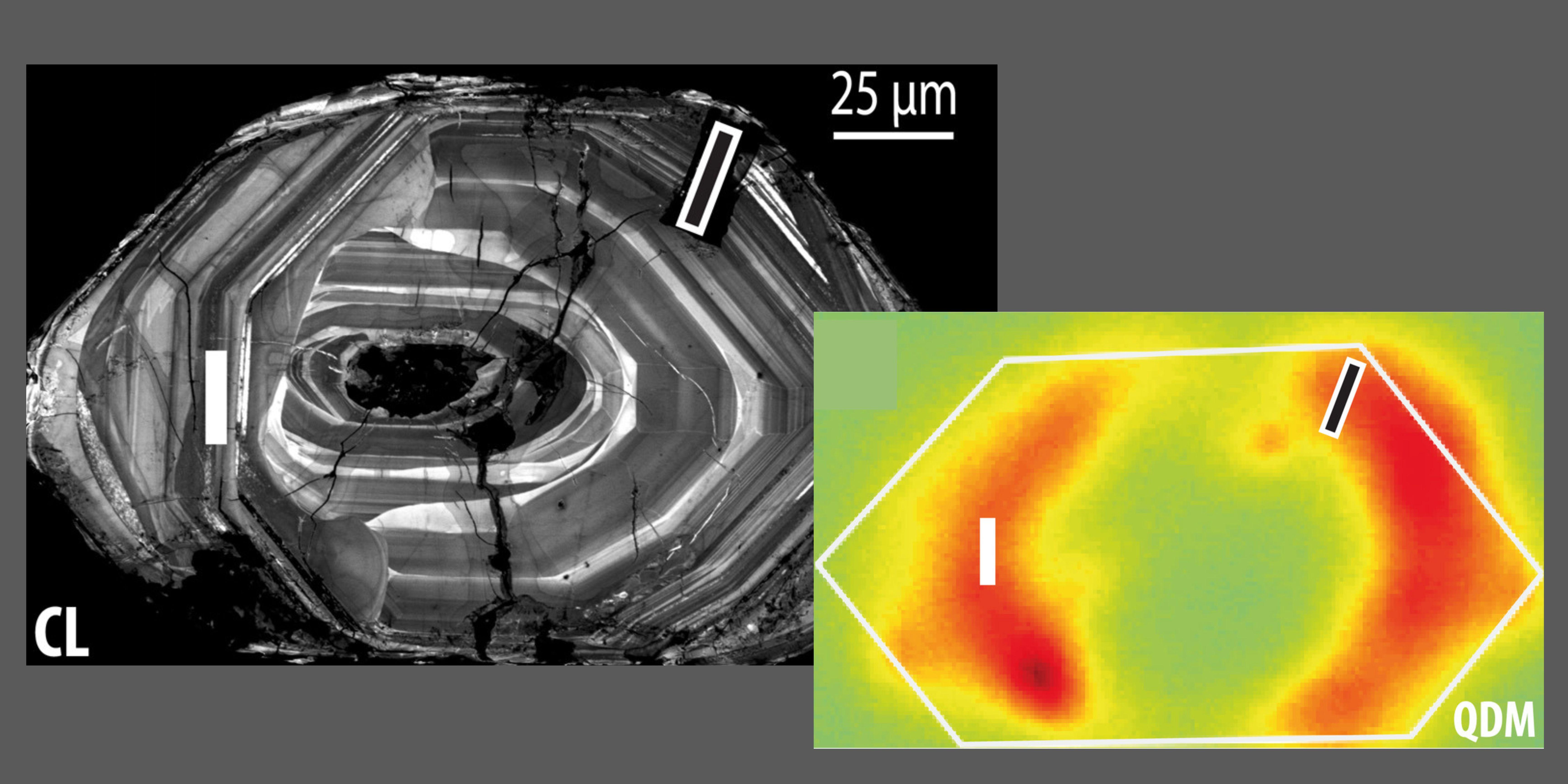
Submitted by Dr C.M. Martin-Jones on Mon, 09/01/2023 - 10:52
Scientists are taking on one of the biggest conundrums in the field of planetary geology – the question of when Earth first got its magnetic field – by peering at the atoms inside ancient minerals called zircons.
The new study, led by scientists from Cambridge’s Department of Earth Sciences, investigated whether zircons from the Jack Hills outcrop, Western Australia, contain a record of Earth’s earliest magnetic field.
Current evidence suggests that Earth’s magnetic field was in place roughly 3.5 billion years ago, but very few rocks exist from before that time — leaving about a billion years of Earth’s history with no magnetic record.
Now, researchers have looked at the Jack Hills zircons in previously unseen detail, revealing that any magnetic signal they have is too young, dating from roughly 2 billion years ago. In other words, the much-debated question of when Earth first got its magnetic field remains unanswered.
The Jack Hills rocks they studied aren’t the oldest on Earth – being only about 3 billion years old – but they contain much older zircons which date from the Hadean period, which stretches back to when Earth was first formed 4.5 billion years ago. For this reason, the Jack Hills zircons have been intensely studied; but whether they contain the original magnetic signal from Earth’s first billion years has been debated.
Zircons themselves aren’t magnetic, but they contain tiny magnetic inclusions which become magnetized along the direction of the Earth’s magnetic field as they cool below a certain temperature. Provided the zircons are not reheated above that temperature subsequently, these magnetic signals of the ancient field can be measured in the laboratory billions of years later.
That’s the theory, but the fact that zircons are so long-lived creates plenty of opportunities for their original magnetism to be reset. In the case of the Jack Hills zircons, after their original formation, the crystals were tossed about by rivers, buried deep in the crust and heated and squeezed on their ride back up to the surface.
“There are a lot of things that have to go right for that magnetic signal to be held through the crystal’s history,” said Cambridge’s Richard Harrison, senior author of the new research, “We wanted to test if all those criteria are met in the case of the Jack Hills.”
Previous work on the Jack Hills zircons has yielded varying evidence of magnetism. An initial study suggested the minerals contained traces of a magnetic field from 4.2 billion years ago. But later research led by MIT found that these zircons may be an unreliable record of magnetism because they had been heated up after formation, resetting the signal. That MIT study, which involved the same team behind the latest study, looked at the crystals in minute detail and found evidence that iron had leaked into the zircons, forming magnetic material called magnetite much later as a result of heating.
Exactly when that iron entered the zircon, however, remained an open question. Now the researchers have analyzed the same zircons at even higher resolution to look for further evidence of heat damage. They used atom-probe tomography (APT) to reconstruct the crystals atom-by-atom and in three dimensions. Researchers from Curtin University led that analysis, alongside a team from Cambridge, MIT, Harvard and Oxford Universities.
They zoomed in on tiny clusters of elements inside the crystals, which are almost like scars left behind by heat damage, “If the zircons had been heated then it’s game over for the magnetic field, it would have been erased,” said Harrison.
They knew, based on some previous work, that these iron-rich clusters would be there, “But it turned out that the information in these clusters was even more useful than we had expected,” said Harrison.
“By analyzing iron peaks, interferences and isotope ratios, we took APT measurements to a new level of detail,” said Cambridge’s Richard Taylor, lead-author of the new study.
Through counting up the number of different types of lead atoms inside each nanometre-sized cluster — containing sometimes just as few as thirty atoms — they were able to work out when the zircons were reheated and the magnetic signal reset. Because the clusters contained lead formed by the radioactive decay of uranium atoms inside the zircon, they could compare numbers of lead isotopes to get a date because of a known uranium isotope decay constant.
They found that the clusters were all much younger than the Hadean, having formed at around 2 billion years ago. The researchers think that the zircons were heated at this time, causing remobilization of iron and formation of magnetite.
“It confirms our earlier interpretation that the magnetic signal is secondary, but adds a constraint on when that happened,” said Harrison, “That means you could get information on the younger magnetic field from the Jack Hills, but not the most ancient field.”
So where should scientists be looking for magnetic signals dating beyond 3.5 billion years? According to Harrison, the fact that the Jack Hills zircons have been damaged by radioactive decay, allowing iron to enter the crystal, probably explains why they are so strongly magnetized. Recent studies of the Barberton Greenstone Belt in South Africa have been promising because they are less altered, explains Harrison, but that means their signal is weaker and more challenging to measure.
“We’re still looking, but its clear that what’s needed is detailed characterization of these samples to understand their complex histories,” said Harrison.
Taylor et. al. Direct age constraints on the magnetism of Jack Hills zircon. Science Advances (2023) DOI: 10.1126/sciadv.add1511
